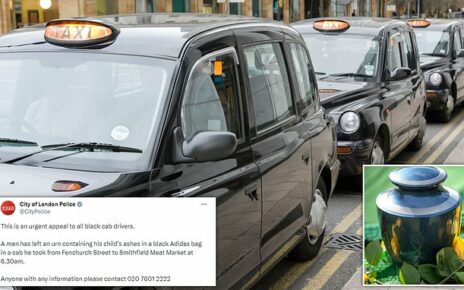Ferrari's stock (RACE) may prove more reliable than the Italian automaker's notoriously finicky supercars.
In a new note on Wednesday, widely followed Morgan Stanley auto analyst Adam Jonas wrote: "Ferrari is as close to recession proof as it gets in our coverage."
Shares of Ferrari were relatively unchanged on Wednesday, but the stock has dropped nearly 27% year to date as investors fear plunging stock and crypto markets could weigh on sales at the supercar maker.
Jonas thinks the sell-off is overdone, pointing to the recent introduction of the Purosangue, Ferrari's first four-door SUV, as a key catalyst in 2023.
Here are more details on Jonas's call on Ferrari:
Price Target: $300 (reiterated)
Rating: Overweight (reiterated)
Stock price movement assumed: +58%
Purosangue a valuable 'proof of concept' for Ferrari
Jonas was particularly bullish on the new Purosangue, which sports a V12 gas-powered engine that churns out 715 horsepower.
"To help investors understand the significance and market position of the Purosangue, we looked at the release of the Lamborghini Urus in 2018," Jonas said. "Pre-Urus, Lamborghini sold 3,815 vehicles worldwide between the Aventador and Huracan models. Four years later in 2021, Lamborghini sold 8,405 vehicles of which 5,021 were the Urus. Since Urus' inception, non-Urus sales have declined -15.2% while Urus sales are up 185% during the same period."
However, Jonas qualified, "we do not in any way expect Purosangue to be more of a size-able niche model within the Ferrari line-up. Ferrari has stated that Purosangue sales will, on average, contribute less than 20% of shipments over its lifetime. We would take the under on 15% of total Ferrari sales at this stage, not due to demand but more related to supply."
"Nevertheless, we view Purosangue as a valuable "proof-of-concept" when assessing demand for ultra luxury SUVs which Ferrari can further develop in full-electric/BEV [battery electric vehicle] form later in the decade where we think the segment will lend itself to an even higher performance and higher margin Ferrari vehicle," the analyst added.
Jonas's estimates on the potential financial impact of the Purosangue:
"We assume starting MSRP to be €390K and add a 13 to 15% personalization premium and a 10% gross margin at the dealer level," Jonas wrote. "Ferrari is expected to start shipping the Purosangue in 1Q23 representing where we ramp production towards 11% of total Ferrari unit volume by 4Q23."
"For the full year 2023 we estimate ~6.8% of units shipped to be Purosangue, helping to boost total company 2023 ASP to ~€ 337K (previous ~327K)," the analyst continued. "Our updated model is ~120 basis points accretive to 2323 EBITDA margins and ~80 basis points to 2024 EBITDA margins. Our diluted EPS forecast increases 7% for FY23 (to €5.95), increasing 9% for FY24 (€6.82) and nearly 10% for FY25 (€7.49)."
Jonas: Ferrari's long-term outlook remains bright despite near-term recession fears
The analyst noted Ferrari's growth potential and strong execution, with "global shipments of >13k units in 2022, growing at a 7.3% compound annual growth rate to 2030 ending at ~21.0k shipments.
Adjusted EBITDA margins "remain 35% in 2022 on strong [product] mix and pricing," Jonas added. "Ferrari trades at a justified premium to luxury brands, but at a discount to luxury leader, Hermes, albeit with more opportunity to grow organically via: new customers, new segments and geographically in China and Asia-Pacific, as well as exhibiting a unique moat with a world renowned brand and a 12+ month customer order book."
Brian Sozzi is an editor-at-large and anchor at Yahoo Finance. Follow Sozzi on Twitter @BrianSozzi and on LinkedIn.
Click here for the latest trending stock tickers of the Yahoo Finance platform
Click here for the latest stock market news and in-depth analysis, including events that move stocks
Read the latest financial and business news from Yahoo Finance
Download the Yahoo Finance app for Apple or Android
Follow Yahoo Finance on Twitter, Facebook, Instagram, Flipboard, LinkedIn, and YouTube
Source: Read Full Article

